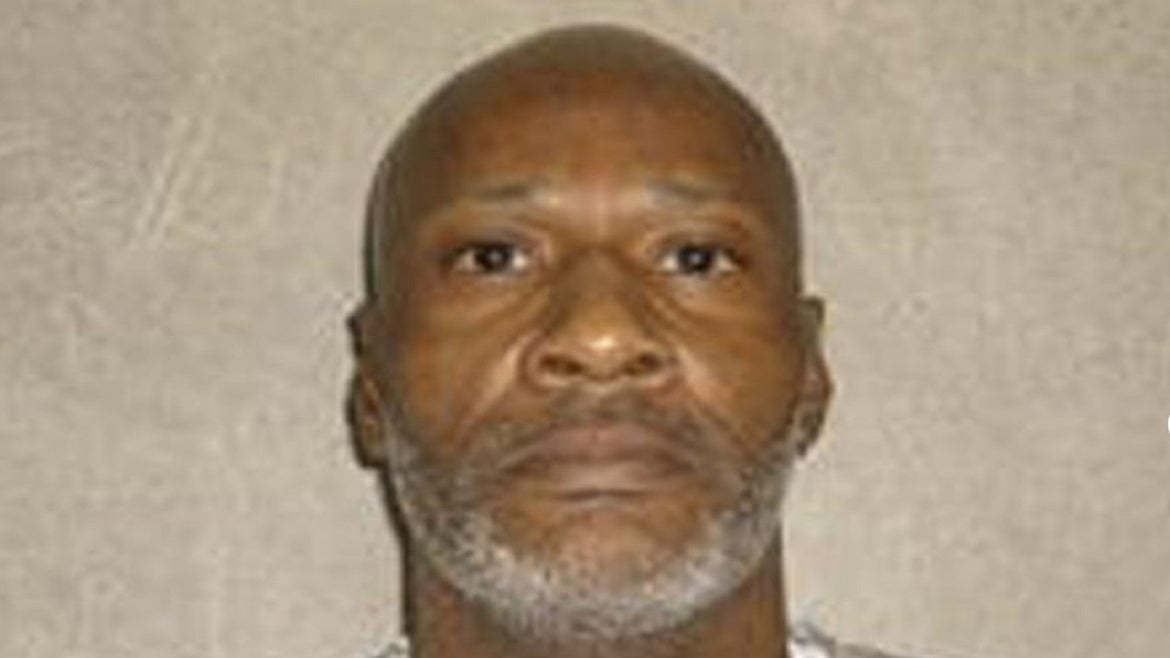John Marion Grant was executed for the 1998 murder of a prison cafeteria worker. He died Thursday after vomiting and convulsing after Oklahoma resumed its death penalty after a six-year moratorium.
Oklahoma resumed its death penalty Thursday by administering lethal injections to an inmate who convulsed and vomited after receiving an initial dose, according to a journalist who witnessed the execution.
John Marion Grant, 60, was the first prisoner to be killed since a series of flawed executions in 2014 and 2015 led to a state ban on capital punishment. Grant was serving a 130-year prison sentence for several armed robberies when witnesses say he dragged prison cafeteria worker Gay Carter into a mop closet and stabbed her 16 times with a homemade shank. He was sentenced to death in 1999.
After the first IV dose of a potent sedative, Grant exhaled. Then, his entire body convulsed, said Associated Press reporter Sean Murphy, who observed the execution at the Oklahoma State Penitentiary in McAlester. He was one of five journalists who witnessed the execution.
Grant’s body shook and jerked nearly two dozen times before vomit spurted from his mouth and spilled down his neck, Murphy said.
The inmate was still alive when members of the execution entered the chamber and wiped his face, Murphy said.
The Oklahoma Department of Corrections issued a statement following the execution, saying it was “carried out in accordance with Oklahoma Department of Corrections’ protocols and without complication.”
Dan Snyder, an anchor at the Oklahoma TV channel Fox 25, also witnessed the death. “Almost immediately after the drug was administered, Grant began convulsing, so much so that his entire upper back repeatedly lifted off the gurney,” he said.
After 15 minutes, Grant was declared unconscious by medical staff. Then he was given vecuronium bromide, which paralyzes the body, and potassium chloride, which stops the heart.
On Twitter, Snyder responded to the correction department's assertion that the procedure was carried out without complications.
“As a witness to the execution who was in the room, I’ll say this: repeated convulsions and extensive vomiting for nearly 15 minutes would not seem to be ‘without complication,'" he posted.
Gov. Kevin Stitt issued a statement after Thursday's lethal injections. “Today, the Department of Corrections carried out the law of the State of Oklahoma and delivered justice to Gay Carter’s family,” he said.
Oklahoma had one of the highest execution rates before incidents in 2014 and 2015 caused a suspension of the state's death penalty. In 2015, Richard Glossip was hours from being executed when prison workers realized they had been sent the wrong lethal drug. Later, it was discovered the same wrong narcotic had been used to execute an inmate nine months before Glossip was put to death.
The drug mix-ups came after a botched 2014 injection left inmate Clayton Lockett struggling on a gurney for 43 minutes before dying of a heart attack. A subsequent review determined the prisoner's veins had collapsed in several injection attempts, and that he had not been given enough drugs to cause death.
Related Stories






